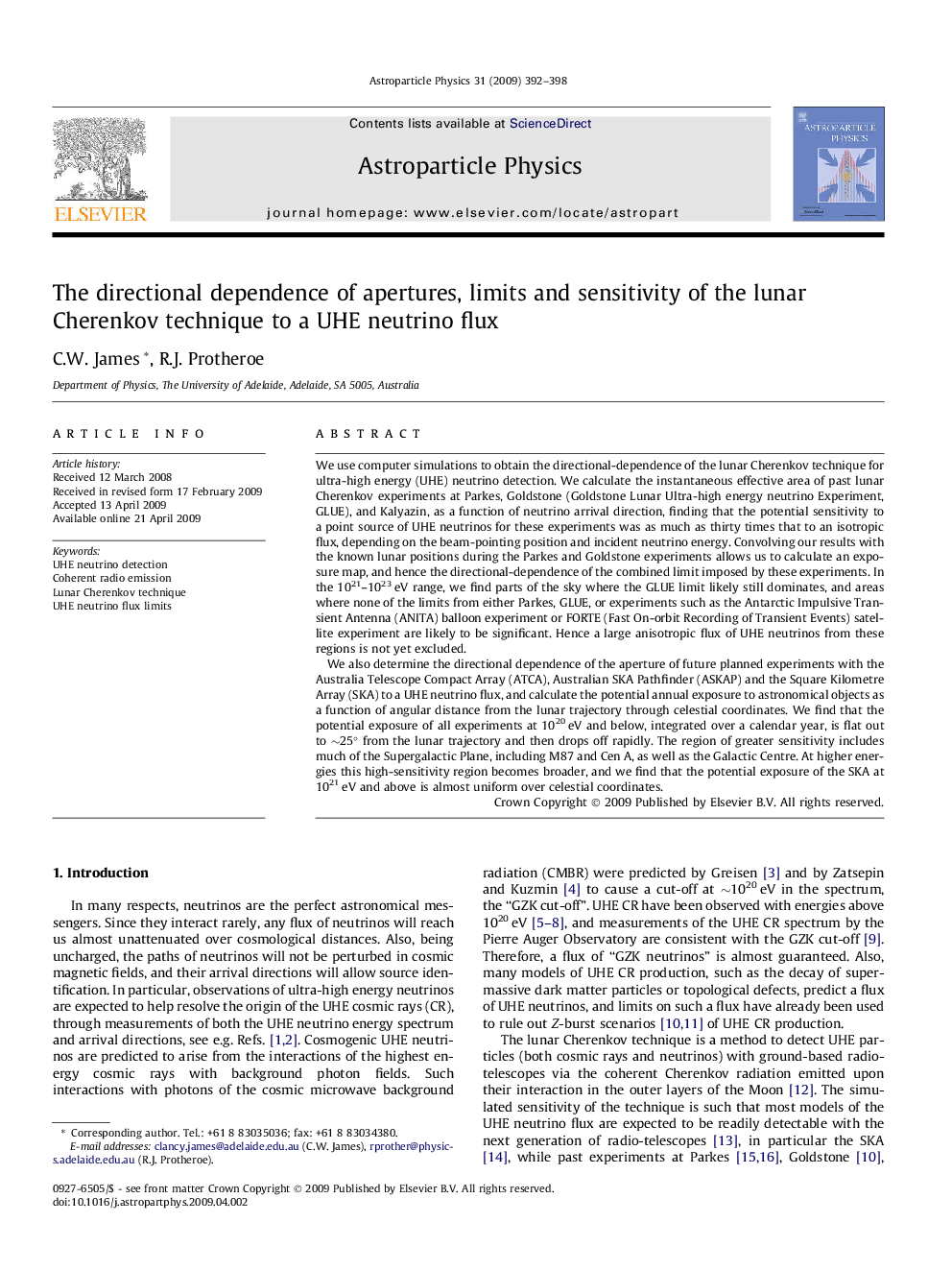| کد مقاله | کد نشریه | سال انتشار | مقاله انگلیسی | نسخه تمام متن |
|---|---|---|---|---|
| 1771299 | 1020748 | 2009 | 7 صفحه PDF | دانلود رایگان |

We use computer simulations to obtain the directional-dependence of the lunar Cherenkov technique for ultra-high energy (UHE) neutrino detection. We calculate the instantaneous effective area of past lunar Cherenkov experiments at Parkes, Goldstone (Goldstone Lunar Ultra-high energy neutrino Experiment, GLUE), and Kalyazin, as a function of neutrino arrival direction, finding that the potential sensitivity to a point source of UHE neutrinos for these experiments was as much as thirty times that to an isotropic flux, depending on the beam-pointing position and incident neutrino energy. Convolving our results with the known lunar positions during the Parkes and Goldstone experiments allows us to calculate an exposure map, and hence the directional-dependence of the combined limit imposed by these experiments. In the 1021–1023 eV range, we find parts of the sky where the GLUE limit likely still dominates, and areas where none of the limits from either Parkes, GLUE, or experiments such as the Antarctic Impulsive Transient Antenna (ANITA) balloon experiment or FORTE (Fast On-orbit Recording of Transient Events) satellite experiment are likely to be significant. Hence a large anisotropic flux of UHE neutrinos from these regions is not yet excluded.We also determine the directional dependence of the aperture of future planned experiments with the Australia Telescope Compact Array (ATCA), Australian SKA Pathfinder (ASKAP) and the Square Kilometre Array (SKA) to a UHE neutrino flux, and calculate the potential annual exposure to astronomical objects as a function of angular distance from the lunar trajectory through celestial coordinates. We find that the potential exposure of all experiments at 1020 eV and below, integrated over a calendar year, is flat out to ∼25° from the lunar trajectory and then drops off rapidly. The region of greater sensitivity includes much of the Supergalactic Plane, including M87 and Cen A, as well as the Galactic Centre. At higher energies this high-sensitivity region becomes broader, and we find that the potential exposure of the SKA at 1021 eV and above is almost uniform over celestial coordinates.
Journal: Astroparticle Physics - Volume 31, Issue 5, June 2009, Pages 392–398